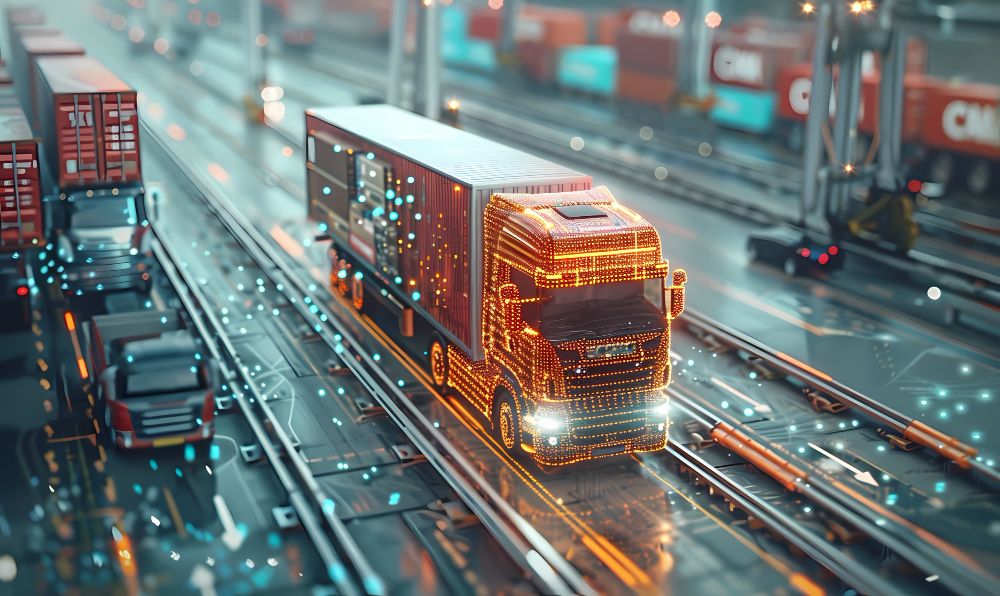
Nebraska is not usually the first place people think of when it comes to technology adoption, but the state has become an important testing ground for how artificial intelligence can be integrated into transportation.
Nebraska is famously one of only two states in the U.S. that are triply landlocked, meaning it takes crossing at least three other states to reach an ocean. It is also home to Monowi, the only incorporated village in the country with a population of one. These surprising details remind us that Nebraska holds more than meets the eye — and its use of artificial intelligence in transportation is no exception.
Smarter Freight and Logistics
Freight is at the heart of Nebraska’s economy. The state’s central location in the United States makes it a critical corridor for trucks moving goods across the country. Traditionally, dispatching and routing required human operators who manually matched loads with available vehicles. AI is now reshaping this process.
Modern AI systems analyze streams of data, including highway traffic, seasonal demand, weather forecasts, and regulatory limits. They then recommend or even automate scheduling decisions. Instead of relying on intuition and experience alone, carriers can maximize vehicle utilization, reduce empty miles, and lower fuel consumption.
This also helps with driver retention, since more predictable assignments reduce stress and wasted time. Nebraska’s freight industry benefits directly because efficiency in this sector translates into lower costs and faster delivery for the many agricultural and manufacturing products that pass through the state.
AI in Accessibility Mapping
Accessibility is often overlooked in discussions of transportation technology, but Nebraska has shown how AI can accelerate progress in this area. Local governments have used geospatial AI models trained on aerial imagery to identify and classify curb ramps and sidewalks. These features are critical for compliance with accessibility standards, but traditional surveys required inspectors to walk neighborhoods and document each ramp individually.
By applying AI, tens of thousands of ramps were mapped in a fraction of the time it would have taken manually. Officials estimate that manually surveying curb ramps and sidewalks would require around 1,000 man-hours — a cost they avoided by using AI tools. The inventory was also more accurate, revealing that many ramps had been missed in earlier surveys.
Just as important, the system can be updated automatically whenever new imagery is collected, ensuring that the data stays current. Beyond ramps, this method can also be adapted to detect pavement conditions, crosswalks, and vegetation growth that affects visibility and pedestrian safety. For cities like Omaha and Lincoln, this means planning investments with precise information rather than relying on partial surveys.
Intelligent Traffic Systems
Congestion and safety are challenges even in mid-sized cities, and Nebraska is no exception. Intelligent Transportation Systems are being researched and piloted to improve urban mobility. These systems integrate roadside sensors, cameras, and communication networks to build a real-time picture of how vehicles and pedestrians move through intersections and highways.
For individual drivers, however, no amount of technology can fully prevent accidents. When collisions happen, it is essential to seek guidance from a reputable Omaha car accident lawyer who understands both local traffic conditions and the legal system.
AI models analyze the data and adjust infrastructure dynamically. Traffic signals can shift their timing to reduce backups, and electronic signage can warn drivers of incidents ahead. Predictive algorithms also help anticipate bottlenecks before they occur, allowing operators to intervene early.
The goal is to treat infrastructure as a responsive system rather than a static set of signals and signs. In Nebraska, this research is closely tied to safety, since rural highways and urban arterials often have different traffic patterns that need adaptive solutions.
Machine Learning for Public Agencies
AI is also being explored at the state agency level. Machine learning offers tools for predicting which roads or bridges are most in need of maintenance, estimating where crashes are more likely to occur, and improving the allocation of limited resources. Unlike traditional forecasting models, machine learning continuously adapts as new data becomes available, whether from sensors, traffic counts, or historical records.
For Nebraska’s Department of Transportation, this shift has several implications. It allows the agency to prioritize repairs before damage worsens, plan for seasonal variations in traffic more accurately, and evaluate the safety impact of new road designs. However, the state also recognizes the challenges.
AI systems must be aligned with strict cybersecurity rules, and the models need ongoing retraining to reflect changing conditions such as population growth or climate trends. Early projects provide valuable lessons that will shape larger deployments in the coming years.
Why Nebraska’s Approach Matters
What makes Nebraska’s adoption of AI in transportation noteworthy is its focus on practical outcomes. A cutting-edge study on freight load consolidation shows AI-integrated optimization techniques can cut transportation costs and travel distance by about 50% compared to industry-standard methods
Instead of investing in speculative projects, the state has applied AI to specific problems: reducing inefficiencies in freight movement, creating faster and more accurate accessibility inventories, improving traffic safety, and supporting state agencies with predictive insights. Each of these applications has delivered measurable benefits.
The broader lesson is that AI in transportation does not require futuristic vehicles or speculative infrastructure. Incremental improvements, guided by clear objectives, can transform mobility in ways that directly affect citizens. Nebraska’s example shows that even states not traditionally associated with high technology can lead in demonstrating how AI supports everyday transportation needs.
Conclusion
Artificial intelligence is often discussed in terms of abstract potential, but Nebraska demonstrates its immediate value when applied to practical transportation challenges.
By optimizing freight operations, modernizing accessibility mapping, advancing intelligent traffic systems, and strengthening public agency decision-making, the state is building a transportation system that is smarter, more inclusive, and more resilient. The approach is deliberate, grounded, and replicable — qualities that make it a useful model for other regions considering how to integrate AI into their infrastructure.





